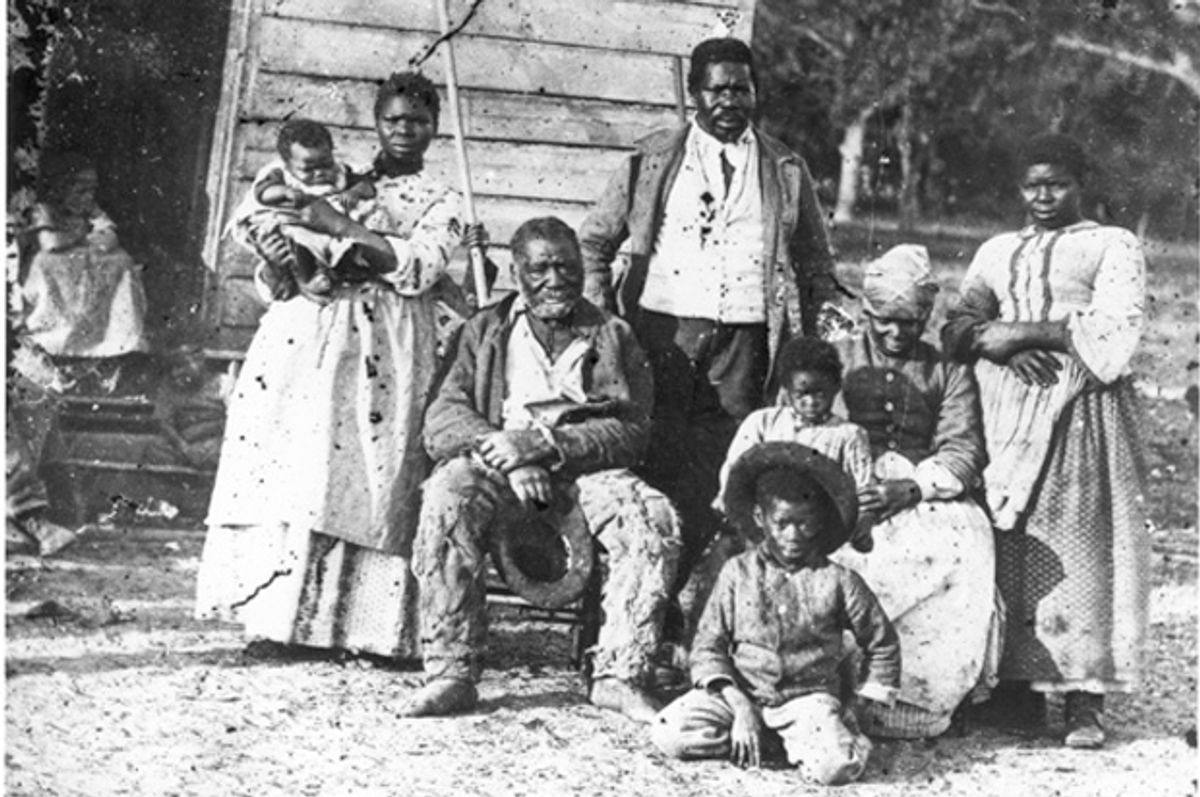Today marks the 200th anniversary of the Monroe Doctrine, celebrated in history books for extending U.S. influence throughout the hemisphere. But few Americans are aware of its lesser-known predecessor – “The Jefferson-Monroe Penal Doctrine” – which first proposed using slavery and involuntary servitude as punishment for crime to establish a national penal colony. At a time of continued reckoning over slavery in the United States, it is also a fitting moment to consider the roots of prison expansion in empire.
At the dawn of the nineteenth century, Gabriel Prosser and hundreds of enslaved people in Virginia planned a revolt. Enslavers and local militia discovered and thwarted the rebellion amid a suffocating climate of white hysteria over the revolution taking place on the former French colony of Saint-Domingue, where enslaved people were engaged in a struggle against slavery that would establish the first Black republic in the Western Hemisphere.
By uncovering the lesser-known history of the Jefferson-Monroe Penal Doctrine, we might counter the white nationalist celebrations that characterize so much of recent debates over the American past.
In the wake of Gabriel’s Rebellion, James Monroe wrote to Thomas Jefferson requesting he find a place to transport prisoners convicted of sedition, conspiracy, or insurrection “out of the limits of the U.S.” What they came up with was evoked in schemes to establish a national penal colony in places like Île-à-Vache, off the coast of Haiti, and Alaska, dubbed “America’s Botany Bay.”
Federal law providing for slavery and involuntary servitude to be used as punishment for crime in territories that otherwise outlawed slavery made proposals for using prison labor to colonize land seem feasible. The so-called “convict clause,” the legal exception for prison slavery, originated with the Northwest Ordinance, applying to territories claimed northwest of the Ohio River, and was carried forward in the Thirteenth Amendment to the U.S. Constitution. The clause provides that: “Neither slavery nor involuntary servitude, except as a punishment for crime… shall exist within the United States, or any place under their jurisdiction.”
Over successive eras of empire-building, those places under U.S. jurisdiction came to include a vast expanse of Native American land across North America, Alaska, Hawaii, Puerto Rico, Panama Canal Zone, and the Philippines. Plantation labor at the Iwahig Penal Farm in the Philippines established after the U.S. waged war with Spain and put down the Philippine independence movement – said to be the largest penal colony in the world – looked strikingly similar to convict labor at Parchman Farm in Mississippi.
We need your help to stay independent
Prison officials celebrated the Iwahig penal colony as a model “Prison without Walls” when they set about implementing a similar scheme at McNeil Island prison off the coast of Washington, in the Puget Sound, suggesting that taking up the “White man’s burden” of imperialism overseas had taught them how to better govern prisons domestically.
The Jefferson-Monroe Penal Doctrine’s formulation that prison slavery be used beyond borders became a mainstay of federal policy. President Theodore Roosevelt selectively extended certain constitutional provisions by executive order to the Panama Canal Zone, where the U.S. had seized control in the early 20th century, for example, making clear that the “convict clause” would apply in this new “extra-territorial” jurisdiction as well.
Many of the same military men, police, and prison guards who fought in places like the Philippines, Cuba, and Puerto Rico during the Spanish-American War, were tapped to extend prison imperialism in the Canal Zone. Veterans from Roosevelt’s “Rough Riders” assumed posts as police captains and prison wardens, overseeing one of largest infrastructure building projects in history. Highly visible and degrading convict labor on road gangs was used to structure racial hierarchy in the Zone.
Want a daily wrap-up of all the news and commentary Salon has to offer? Subscribe to our morning newsletter, Crash Course.
As in the U.S. South, bogus charges and sentences to hard labor effectively re-enslaved Black people in the Panama Canal Zone, including thousands of migrant workers from the Caribbean islands of Jamaica, Barbados, and Martinique. And hard labor on road gangs in the Panama Canal Zone looked a lot like the chain gangs used to consign Black people to prison slavery in the South.
The convict clause may now be the longest lasting and farthest-reaching piece of federal prison policy. As an early cornerstone of what might be called “prison imperialism”, it spawned a network of historic and contemporary institutions that have spread U.S.-style structural racism around the globe. Whether we chose to disavow or ignore it, the fact is that empire-building crucially shaped the rise of the mass incarceration.
Ahead of the impending commemorations of the Monroe Doctrine, we should understand that U.S. policymakers exported prison slavery along with their foreign policy aims. By uncovering the lesser-known history of the Jefferson-Monroe Penal Doctrine, we might counter the white nationalist celebrations that characterize so much of recent debates over the American past.
To reverse course requires that we reckon with the living legacies of racism and colonialism in the prison system. The convict clause provision for prison slavery has recently been abolished in seven states and was on the ballot but failed to garner enough votes in California and Louisiana last year. This history, hidden in plain sight, urges us to mobilize support for campaigns like 13th Forward in New York and the Abolish Slavery National Network across the country, and push to end to slavery, without exceptions.

Shares